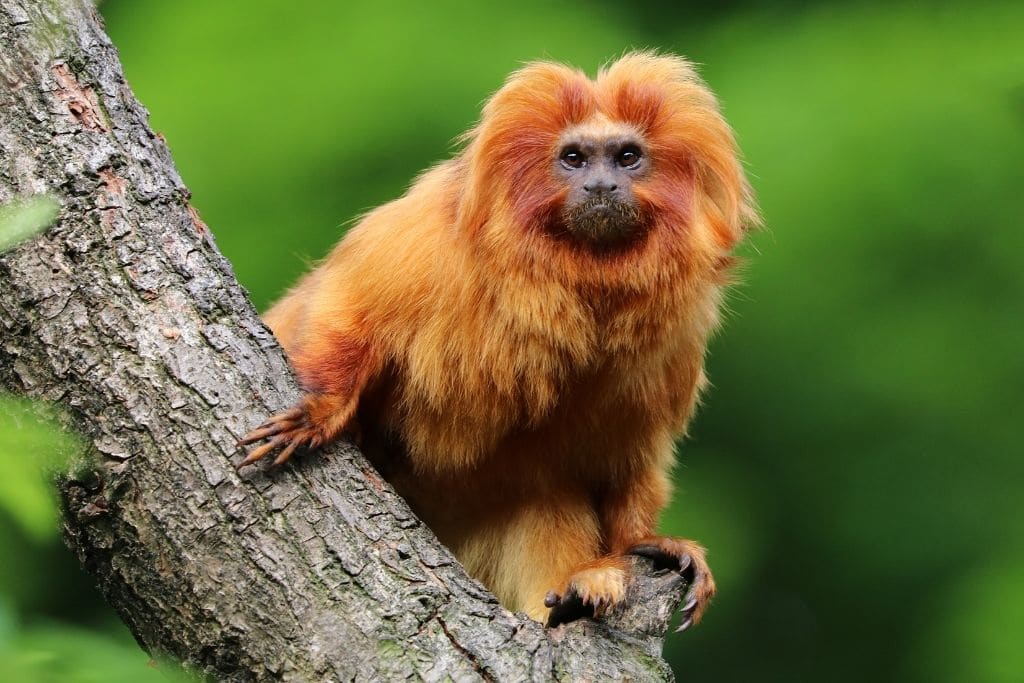Key Takeaways
-
The Sony PXW-Z280 is a powerful tool for filmmakers, offering stunning 4K HDR capabilities perfect for capturing the vibrant Amazon Rainforest.
-
Key features like its 17x zoom lens, advanced face detection autofocus, and built-in ND filters make it ideal for dynamic rainforest environments.
-
Protecting your gear from humidity and preparing for limited access to power are crucial steps for a successful rainforest filmmaking expedition.
-
Understanding the light dynamics of the forest and composing your shots can lead to breathtaking and impactful footage.
-
Post-production, including color grading and sound design, plays a pivotal role in bringing the Amazon’s essence to the screen.

“Sony PXW-Z280 | PXWZ280 4K Handheld …” from www.expandore.com and used with no modifications.
An Epic Quest Through Lush Greenery: Capturing the Amazon with Sony PXW-Z280
Imagine standing amidst the cacophony of chirps, roars, and rustles of the Amazon Rainforest. As a filmmaker, you’re not just a visitor; you’re a storyteller on a mission to capture the essence of this vibrant ecosystem. And in your hands, the Sony PXW-Z280 is not just a camera; it’s your brush to paint the untamed beauty of the Amazon.
The Sony PXW-Z280: Gateway to Cinematic Brilliance
Why choose the Sony PXW-Z280 for such a formidable task? Simply put, this camera is a beast when it comes to capturing high-resolution, color-rich footage. It’s the first professional camcorder to feature a 4K three-chip CMOS sensor system, enabling you to capture the rainforest’s myriad of colors in stunning detail. Moreover, its impressive 17x zoom lens ensures you can get up close and personal with wildlife, without disturbing the natural order.
A Rendezvous With Nature’s Untamed Majesty
When you’re filming in the Amazon, every second is an opportunity to witness something extraordinary. The PXW-Z280’s advanced face detection autofocus locks onto your subject with precision, so whether it’s a fleeting glimpse of a jaguar or the flutter of a butterfly, you won’t miss a beat. This feature is a game-changer, especially when you’re working solo and need to rely on your gear to keep up with the action.
But that’s not all. This camera understands the challenges of filming in varying light conditions. With built-in ND filters, you can swiftly adapt to the changing light, from the bright, dappled sunlight that pierces through the canopy to the soft twilight of the forest floor.
Now, let’s dive deeper into the heart of the Amazon and discover how to make the most of your Sony PXW-Z280.
Forays Into Uncharted Canopies: Tools and Trials
Before you venture into the dense foliage, it’s essential to familiarize yourself with the PXW-Z280’s suite of features. From customizable picture profiles to its dual MI shoe for external accessories, this camera is built for versatility. But it’s not just about what’s in the camera; it’s also about what goes with it.
Packing the right accessories can make or break your rainforest filmmaking experience. You’ll want to bring along extra batteries and memory cards, given the limited access to power and the sheer amount of footage you’ll be capturing. And don’t forget a sturdy, waterproof case to protect your precious cargo from the elements.
Customizing Your Kit: Essential Gear for Jungle Filming
Embarking on a jungle shoot is like preparing for an expedition. You need to carefully consider each piece of equipment for its necessity and durability. Besides your Sony PXW-Z280, here’s what you should include:
A reliable tripod with fluid head provides the stability needed for those long, serene shots of the forest’s grandeur or a time-lapse of the ever-changing light. A set of prime lenses could be invaluable for their speed and sharpness, particularly when capturing the minute details of the Amazon’s flora and fauna. And let’s not forget a rain cover for your camera – the Amazon won’t hold back on you, and neither should your gear.
Battling the Elements: Protecting Your Equipment from the Amazon’s Humidity
The humidity in the Amazon can be a filmmaker’s worst enemy. It creeps into every crevice, potentially wreaking havoc on sensitive electronics. The key to combating this is preparation and protection.
One of the most effective tools at your disposal is a set of silica gel packets. These desiccants absorb moisture and can be placed in your equipment cases to help keep the humidity at bay. It’s also wise to bring along airtight plastic bags to wrap your gear during transportation, especially when crossing rivers or during sudden downpours.
But sometimes, despite all precautions, moisture finds its way in. If your camera does fog up, don’t panic. Power it down immediately and allow it to acclimate to the temperature or place it in an airtight bag with silica packets to draw out the moisture.
-
Use silica gel packets to protect against humidity.
-
Store equipment in airtight bags during transport.
-
If fogging occurs, power down the camera and use silica to dry it out.

“7 Amazon Rainforest Endangered Species …” from earth.org and used with no modifications.
Strategies for Masterful Cinematography in Dense Forests
The Amazon is a labyrinth of visual complexity. To capture its essence, you must be strategic in your approach to cinematography. The Sony PXW-Z280’s advanced features can help you navigate this complexity, but you must also rely on your instincts and creativity.
Move slowly and deliberately. The forest is full of surprises, and a rushed shot will rarely do it justice. Use the camera’s high frame rate capabilities to create smooth slow-motion that can capture the balletic movement of a leaf falling or a monkey leaping through the canopy.
Finding the Light: Exposure Tips in the Undergrowth
Light in the rainforest can be as elusive as the creatures that inhabit it. You will often find yourself in low-light situations under the canopy, where the dense foliage blocks out the sun. The Sony PXW-Z280’s impressive ISO range and noise reduction capabilities are your allies here.
Example: In a dimly lit section of the forest, I once had to bump up the ISO to 8000. Thanks to the camera’s noise reduction feature, the footage retained its clarity without the graininess typically associated with high ISO settings.
Additionally, when you do encounter those beams of sunlight that break through, use them to your advantage. Position your subject within these natural spotlights for a dramatic effect, being mindful to adjust your exposure to prevent blown-out highlights.
The Power of Composition: Framing Shots Amidst the Chaos
In the chaos of the rainforest, composition is key. Look for natural lines and shapes that can guide the viewer’s eye through the frame. The rule of thirds is particularly helpful here; position points of interest along these lines or at their intersections.
Remember, every frame should tell a part of the story you are trying to convey. The PXW-Z280’s viewfinder can be your window into this world, helping you to isolate subjects and create a composition that speaks to the narrative of the Amazon’s enchanting environment.
Navigating the Real-life Challenges of Jungle Filmmaking
Filming in the Amazon isn’t just about battling the elements; it’s also about embracing the unexpected. The jungle is alive, and as a filmmaker, you must be adaptable.
Encountering Wildlife: When the Amazon Casts Its Characters
One of the most thrilling aspects of rainforest filmmaking is the wildlife. These creatures are the true stars of the Amazon, and capturing them on film requires patience and respect.
-
Stay quiet and unobtrusive, minimizing your presence.
-
Use the PXW-Z280’s zoom lens to keep a safe distance while still getting the shot.
-
Be prepared to wait; wildlife operates on its own schedule, not yours.
When that magic moment arrives, and a toucan or sloth makes an appearance, you’ll be ready to roll, capturing the encounter with the clarity and vibrancy that only the PXW-Z280 can provide.
Working with Limits: Storage and Battery Life on Location
Working in the Amazon means you’re often far from the nearest power outlet. Therefore, maximizing your storage and battery life becomes a strategic operation. Always carry multiple high-capacity memory cards and a minimum of two spare batteries, fully charged.
Even with the best gear, you’ll need to manage your resources efficiently. Use lower resolution settings for test shots or when 4K isn’t necessary. And when it comes to batteries, conserve power by turning off the camera between shots and avoiding unnecessary playback.
Bringing the Rainforest to Life: Post-Production Magic
After you’ve navigated the Amazon and captured its wonders, it’s time to bring your footage to life in post-production. The PXW-Z280’s 4K HDR footage gives you a wide gamut of color and detail to work with. Color grading is your next step, and here, subtlety is key. Enhance the greens and the earth tones to reflect the true colors of the rainforest, but be careful not to oversaturate.
Sound design is equally important. The dense layers of the Amazon’s soundscape are as integral to the experience as the visuals. Use high-quality recordings of the natural ambience to immerse your audience in the environment fully. And remember, the goal is to complement your visuals, not overwhelm them.
A Filmmaker’s Ethos: Protecting the Amazon Through Visual Storytelling
As filmmakers, we have the power to influence and inspire. When filming in places as precious as the Amazon, we carry the responsibility of not just documenting its beauty, but also advocating for its preservation. For those interested in mastering rainforest photography and filmmaking, it’s essential to approach the craft with respect and mindfulness towards the natural environment.
Conservation Through Film: Influencing Perception
Your film can be a powerful tool for conservation. By showcasing the Amazon’s biodiversity and the threats it faces, you can help raise awareness and drive change. It’s important to approach this with sensitivity and respect for the local communities and ecosystems.
Most importantly, practice ethical filmmaking. Be mindful of your impact on the environment. Leave no trace of your presence, and never disturb the wildlife for the sake of a shot. Your audience will appreciate a film that not only captivates but also educates and inspires stewardship.
Beholding the Amazon: Impact on Viewers
The true success of your film will be measured by its impact on viewers. If you’ve done your job well, they will come away with a deeper appreciation for the Amazon’s majesty and a stronger desire to protect it. That is the power of visual storytelling.
FAQ
What makes Sony PXW-Z280 ideal for rainforest cinematography?
The Sony PXW-Z280 is packed with features that cater to the challenges of rainforest cinematography. Its robust build, weather-sealing, and advanced image capture capabilities enable filmmakers to produce high-quality content in the demanding conditions of the Amazon Rainforest.
How do you deal with high humidity and equipment safety?
Protecting your equipment from humidity requires diligence. Keep silica gel packs in your gear bags, use airtight containers, and allow your camera to acclimate to temperature changes gradually. Regular maintenance and checks are crucial to ensure that your equipment remains in top condition.
Can the PXW-Z280 handle the low light conditions of dense foliage?
Yes, the Sony PXW-Z280 excels in low light conditions. Its high-sensitivity sensors and noise reduction capabilities enable filmmakers to capture clear, detailed footage even in the challenging light of the rainforest undergrowth.
-
Utilize the camera’s high ISO settings and noise reduction.
-
Adjust exposure carefully to avoid losing detail in highlights and shadows.
-
Embrace the natural light patterns of the forest for dramatic effect.
What are some challenges unique to filming wildlife in the Amazon?
Filming wildlife in the Amazon presents unique challenges such as unpredictable animal behavior, the need for patience, and the importance of respecting the natural habitat. Using the PXW-Z280’s zoom capabilities allows for capturing intimate wildlife moments without intrusion.




